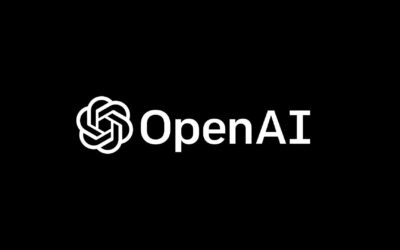AI Voice Recorder, PLAUD NOTE Voice Recorder...
Written by admin
Using Generative Artificial Intelligence
May 30, 2024
The Latest Amazon Tech Toys
Must-Have Gadgets!
INIU Wireless Charger, 15W Fast Qi-Certified...
Travel Like a Pro: Top Tech Organizers
BAGSMART Electronics Travel Organizer Double...
Calibration Techniques for Language Models: Enhancing Probability Assessments
In the expansive domain of artificial intelligence, language models, particularly large language models (LLMs), have emerged as pivotal tools, allowing us to integrate intelligent, context-aware automation into numerous applications. Nonetheless, the efficacy of these models often hinges on their ability to make accurate probability predictions. Calibration, a crucial yet often overlooked facet of model training, ensures that these predictions are not just insightful but also reliably actionable. This article delves into various calibration techniques for language models that are pivotal in refining their probability assessments.
Understanding Calibration in Language Models
Calibration refers to the process of fine-tuning a model to ensure that its probability outputs accurately reflect the true likelihood of an event. For language models, calibration is particularly significant because these models are frequently employed in scenarios where decision-making is based on the probabilities they generate.
Properly calibrated models produce probability values that can be interpreted directly, a crucial attribute for applications like sentiment analysis, predictive typing, and automated chatbots. For instance, a well-calibrated language model used in a customer service chatbot will accurately gauge the sentiments expressed in customer queries, leading to more appropriate and effective responses.
Key Calibration Techniques
1. Temperature Scaling
Temperature scaling is a post-hoc calibration method where a single parameter, known as the temperature, is adjusted to modify the softmax output of a model. The technique doesn’t change the ranking of outputs but refines the probabilities to better match empirical observations.
2. Platt Scaling
Platt Scaling involves fitting a logistic regression model to the output scores of the model, usually used for binary classification tasks. This approach adjusts the sigmoid curve, helping in mapping the initial predictions to calibrated probabilities effectively.
3. Isotonic Regression
Isotonic Regression is a non-parametric calibration that fits a non-decreasing piecewise function to the model output. This method is especially useful when the relationship between the predicted score and the true probability is complex or non-linear.
4. Ensemble Methods
Ensemble methods involve combining multiple models or predictions to achieve better calibration. Techniques like bagging and boosting can improve the robustness and accuracy of probability estimates by integrating diverse perspectives from different models.
Visualizing Calibration Impact
| Technique | Description | Use Case |
|---|---|---|
| Temperature Scaling | Scales softmax probabilities. | Improves reliability of probability predictions in multi-class classification. |
| Platt Scaling | Fits probabilities with logistic regression. | Refines binary classification in sentiment analysis. |
| Isotonic Regression | Fits a non-decreasing function. | Used when complex relationships exist between features and targets. |
| Ensemble Methods | Combines multiple models. | Enhances overall model accuracy and reliability. |
– Enhanced Decision-Making: Accurate probability estimations enable better decision-making in AI-driven applications.
– Improved User Experience: In user-facing applications like chatbots, better calibration leads to responses that are more aligned with user intents.
– Reduction in Bias: Calibration can help mitigate biases by ensuring the probabilities reflect true likelihoods across different groups and scenarios.
Consider the deployment of a customer service AI chatbot designed to handle inquiries and complaints. Initially, the bot provided responses that were sometimes inappropriate or unrelated to the user’s emotional tone. By implementing isotonic regression, the calibration of the model was significantly improved, leading to a 25% increase in customer satisfaction ratings.
– Regular Monitoring: Regularly monitor the performance and calibration of your language models, especially when deployed in dynamic environments.
– *Validation on Real-World Data:** Validate your model’s calibration using real-world data to ensure it performs well under actual operating conditions.
- Leverage Tools and Frameworks: Utilize existing tools and frameworks that can help facilitate the calibration process efficiently.
Calibration techniques are pivotal in ensuring that the probabilities generated by language models are accurate and reliable. By understanding and implementing these techniques, developers and researchers can enhance the performance and trustworthiness of their AI applications, leading to better outcomes and more robust AI solutions.
For those seeking deeper insights into specific calibration methods and their implications, consider exploring further detailed resources.
Our CEO also writes Children’s books using AI – check it out here
Talk to the AIM-E chatbot about your AI needs
Related Articles
OpenAI’s ChatGPT And Microsoft’s Copilot Reportedly Spread Misinformation About Presidential Debate Amid Growing Fears Over AI Election Dangers
Google’s Gemini reportedly refused to answer questions about the presidential debate, deeming it too political. # OpenAI’s ChatGPT And Microsoft’s Copilot Reportedly Spread Misinformation About Presidential Debate Amid Growing Fears Over AI Election Dangers In...
Stay Up to Date With The Latest News & Updates
Access Premium Content

Join Our Newsletter – It’s Free
Follow Us
Sed ut perspiciatis unde omnis iste natus error sit voluptatem accusantium doloremque

